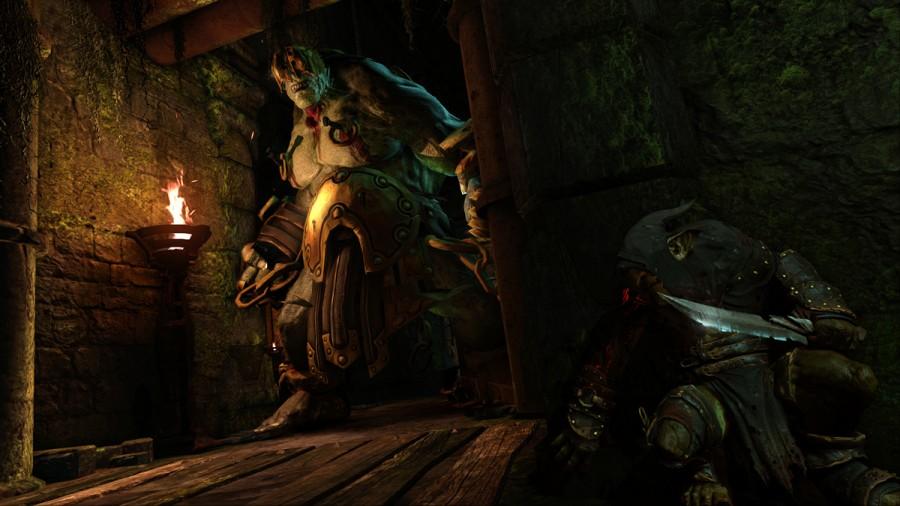‘Styx’ a fun RPG
Stealth aspect and gameplay outweighs the few downsides
Styx: Master of Shadows came out under the radar stealthily, much like its protagonist. By no means is this telling of its value. Styx is a gem of a game, ranking well in the stealth genre, and deservedly so.
The game begins with Styx, a foul-tempered and foul-mouthed goblin staring at the heart of the World Tree, monologuing before he’s capture. A short cutaway scene reveals that the levels are actually Styx’s memories of the events leading him to this point in time. After the intro level, designed to gradually introduce players to Styx’s various abilities, the player is set free to develop Styx how they so chose.
Styx’s abilities are fueled by a mystical source known as amber, the glowing magical sap the World Tree produces. The amber within Styx’s body even contributes to one of the games core indicators, the glowing amber on his arm that only appears when he is unseen.
Unlike some of the other games in the genre, Styx sports an RPG-like skill system, allowing you to develop his abilities along various skill trees in numerous ways. Upgrades include expanding the amount of tools he can carry to causing his spawned clone to function as a smoke bomb. The sheer utility and variety of the way Styx can be played is what makes this game so fun to play.
In addition to this, the levels are wonderfully well designed. While they may seem short on a map, the vertical gameplay makes the game feel far more open than it actually is. Whether Styx is in the sewers, or in the palatial Library of Akenash, there will always be more than one way to approach your objective, including managing to get through the entire level without taking a single life (an extremely difficult feat).
Unfortunately, the game also does sport some downsides. Some of the animations are a little slapped together, but this falls short of the guard AI and choppy combat. Comprised of an intelligence created from depths of fail videos, the guards can be laughably inconsistent in their behavior on any difficulty but “Hard” or “Goblin,” having almost no peripheral vision until the later difficulties.
And of course, there’s the combat. Face-to-face combat in this game is overly simplistic and gimmicky, relying on a dueling system and a simple “click-to-counter” method of gameplay. From a game that sports such a depth of level design and a good bit of character customization, I would have expected a far more in depth and intuitive combat system. If the player is capable of remaining stealthy, as the game intends, then the need for this “dueling system” will arise rarely enough for it to actually be a refreshing change of pace, even if clunky.
The true shortcoming of this game is in walking off a ledge to grab it. Although easily mastered with a little bit of practice, the player will actually have to manually turn Styx around after he walks off a ledge, despite the game asserting that simply walking off the ledge will cause you to grab it.
Although the game stands short at a scant 15-20 hours of gameplay, it easily sports great replay-ability thanks to the multi-faceted levels and the ability to build Styx multiple ways.
It is well worth the pick up for the price.







